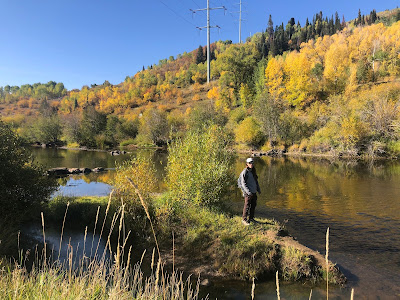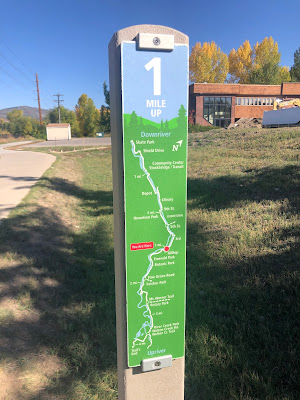For a good chunk of my childhood I said I was from Utah, thanks to the three years I lived there before moving to Germany at age six. My parents kept that childhood home in Mountain Green, allowing Cameron and I to hunker down for the winter as we build out the van. It also gives me the chance to assess if I like living in a place with a proper winter, someplace that is semi-rural (meaning I have to drive to do any errands), and test out some of the realities of being a home owner.
Mountain Green may have an unfair advantage, since we will be staying here significantly longer than any other location on the list. Rather than judging it on a first impression, we're getting the full experience of what it might be like to commit to this spot. At the time I am writing this, we have lived here for about three weeks. In that time we've experienced the peak of autumn leaves, transitioned into the first snows (both on the mountains and at the house), went on a few hikes, had dentist appointments, met up with a few potential new friends, and done various home improvement projects. I feel like I live here.
The Good
- Stunningly beautiful! We have great views of the northern Wasatch Range, and particularly of Thurston Peak. At the top of the neighborhood you can catch glimpses of the Strawberry Express Gondola at Snowbasin. Even if you are in Ogden, Morgan, or Salt Lake City, the surrounding mountains seem so close and tangible.
- With that, there is a lot of wildlife. I see wild turkeys practically every day, and we've also seen a herd of wild sheep, a black bear, and some deer and elk (or maybe moose) tracks not far from our house.
- No surprise, there are lots of outdoor activities. We're 15 minutes away from Snowbasin, and of course there are lots of hiking and mountain biking options, too. The nearest swimmable lake is also less than 20 minutes away.
- It's not just outdoorsy things that are close. Ogden (20 minutes) has a cute downtown, a seasonal Saturday farmers market, and quite a few restaurants. It also has all of the ugly-but-necessary strip mall-type stores that you need but don't really want to see, so it's a good town to be near when you need regular access to Home Depot.
- Similarly, Salt Lake City (30 minutes) is there whenever we need the airport or want to do a big-city activity, like see a live show.
- Folks are really friendly. We met most of our neighbors within the first two days here, and every time I go shopping I'm surprised at how engaging the small talk is. I've also been using BumbleBFF to make friends, and so far it's been very successful; I'm already making many more connections than when I used the app in Kraków.
- It feels homey. I'm sure a big part of that is that we are living in a literal home (not a van, hotel room, or dinkey rental), but it's easy to imagine a fairly permanent life here.
The Bad
- There are literally no radio stations that reach Mountain Green or Morgan.
- Mountain Green is not really it's own town; it's a "census-designated place," but our zip code belongs to Morgan. That means there isn't a downtown or any real shops (other than a gas station convenience store) and it's a little hard to explain where I live.
- I have to drive for all of my errands. Just about everything can be reached within 15 minutes, but this is the first time in my adult life I haven't been walking distance to a grocery store.
- Native Utahns can be a little cliquey, but it seems to help when I add that I grew up here as a kid.
- Because it's rural, it's also more conservative. I see a lot of Trump 2024 bumper stickers, and I need to be careful about sharing my liberal political views.
- I also need to be careful about my religious views. There is a really high Mormon population (which is true for all of Utah, but especially the more rural parts) and I feel like every family I see out and about has at least four kids (heaven forbid if I mentioned birth control or abortion rights!). If Cameron and I were to ever have children, we would definitely be old parents in comparison.
- The general political/religious vibe of the state means there are some weird liquor laws. You can't get beer higher than 5% at a restaurant, if you drink at a restaurant you have to also order food; beer sold at grocery stores has to be under 3.2%; establishments can only sell alcohol from 11:30am-1am; and alcohol can never be served as a package (so if you buy a six pack, you are actually buying six individual beers). The rules won't affect me too much, but it is something to get used to.
The Verdict
Yes. If my parents decided to sell this house Cameron and I would seriously consider buying it from them. It may not be the perfect place, but it's pretty close. None of the items on the "bad" list are deal breakers, and the beautiful vistas really deserve bonus points – every day I wake up and am so excited to look out of the window. We'll see if my views change after experiencing a proper winter (another thing I haven't had to do in my adult life), and I also would want to test out the summer, since I've heard it can be oppressively hot. I'm a little worried that if we choose this as our just right it would be hard to find a house that is at least as good as this one, but for now I love it here!







































